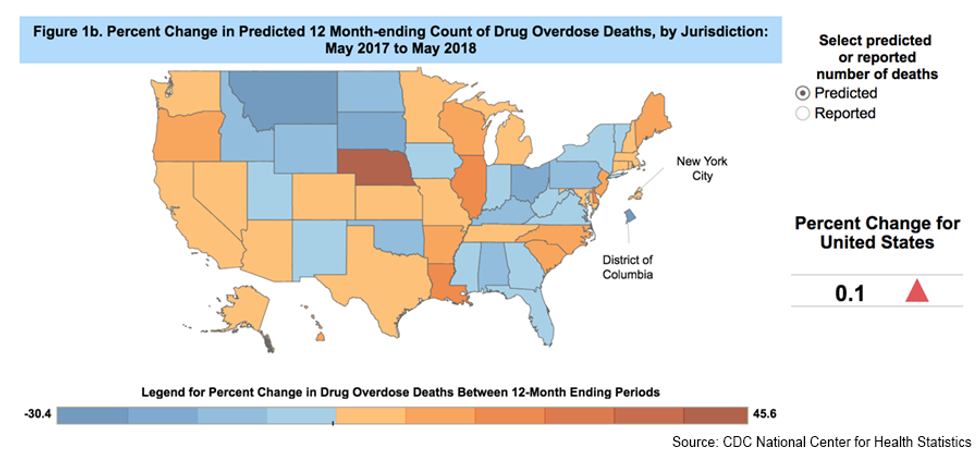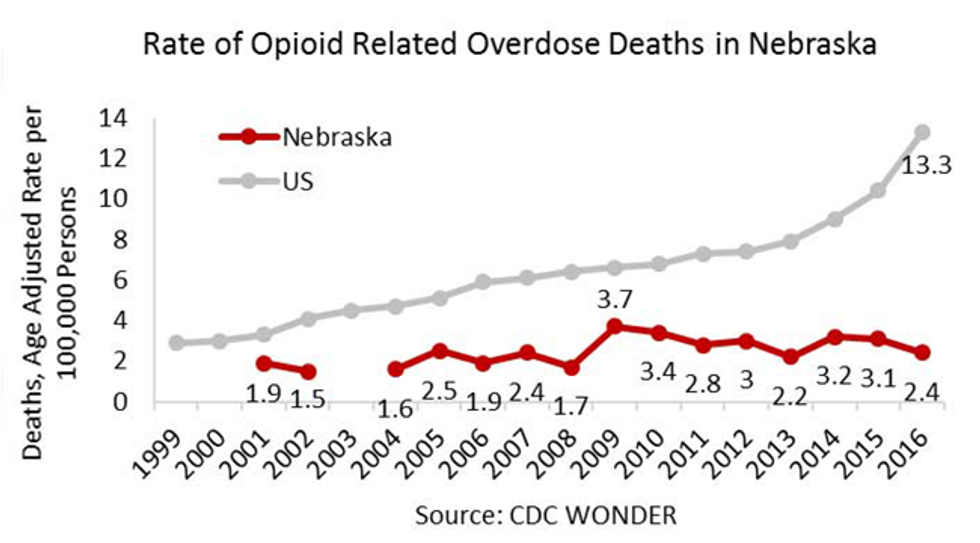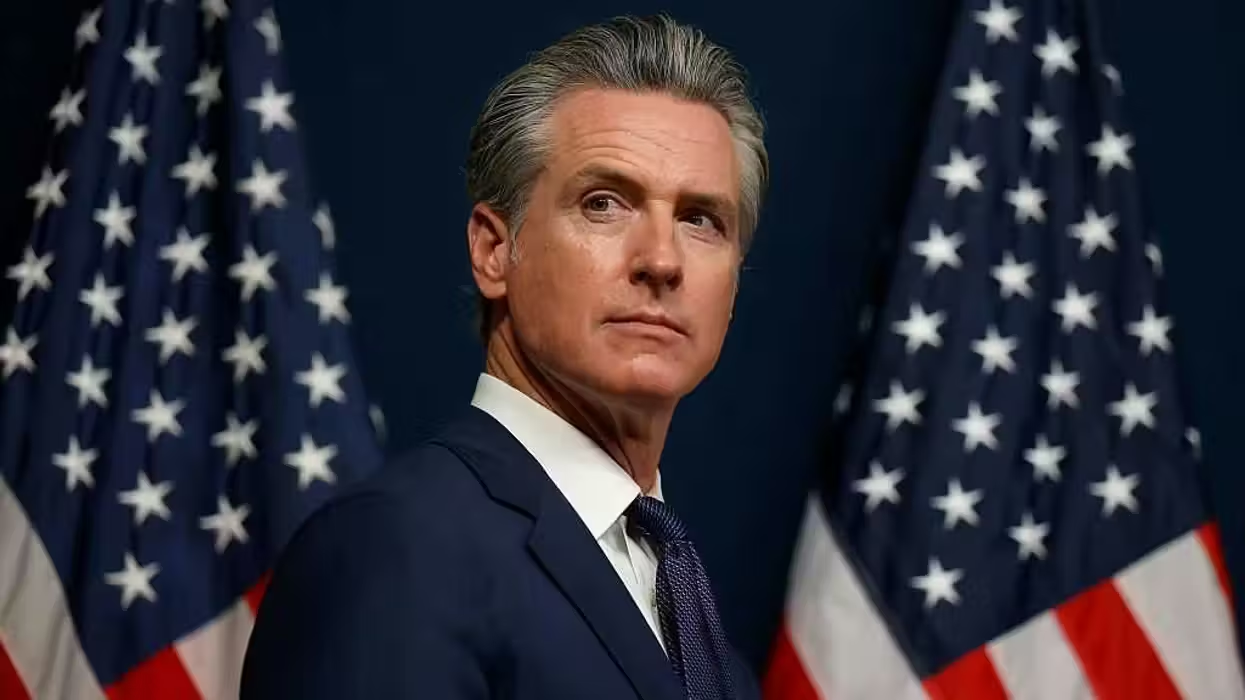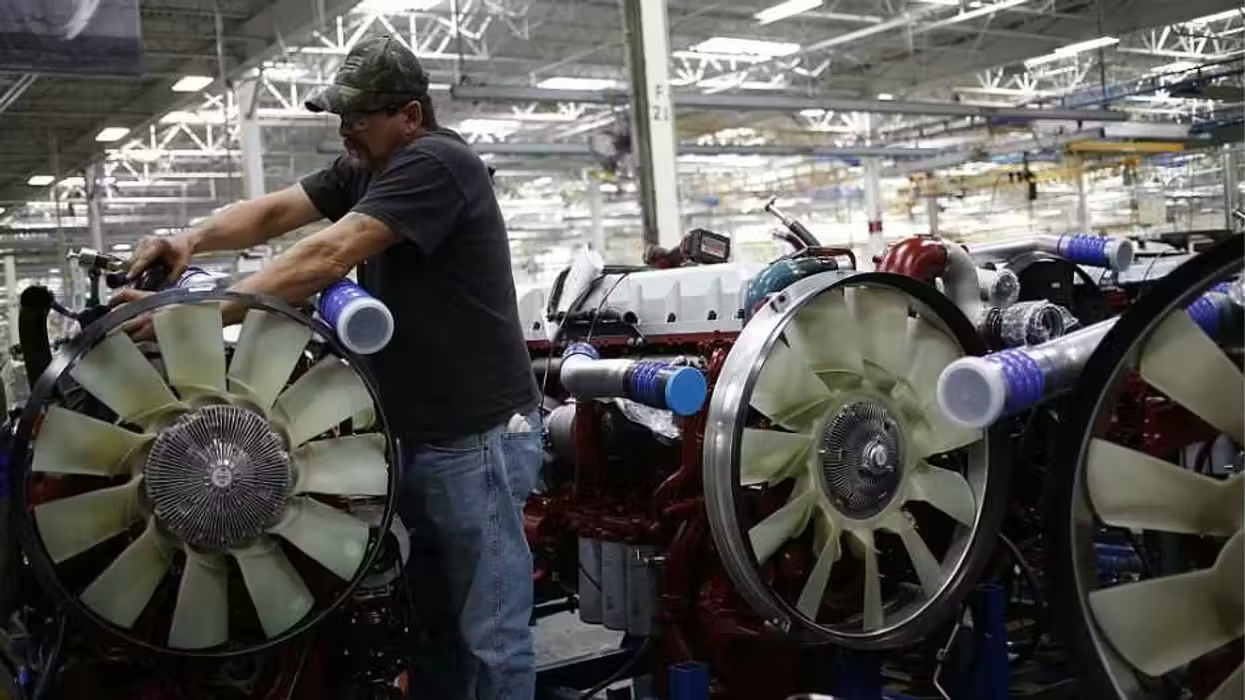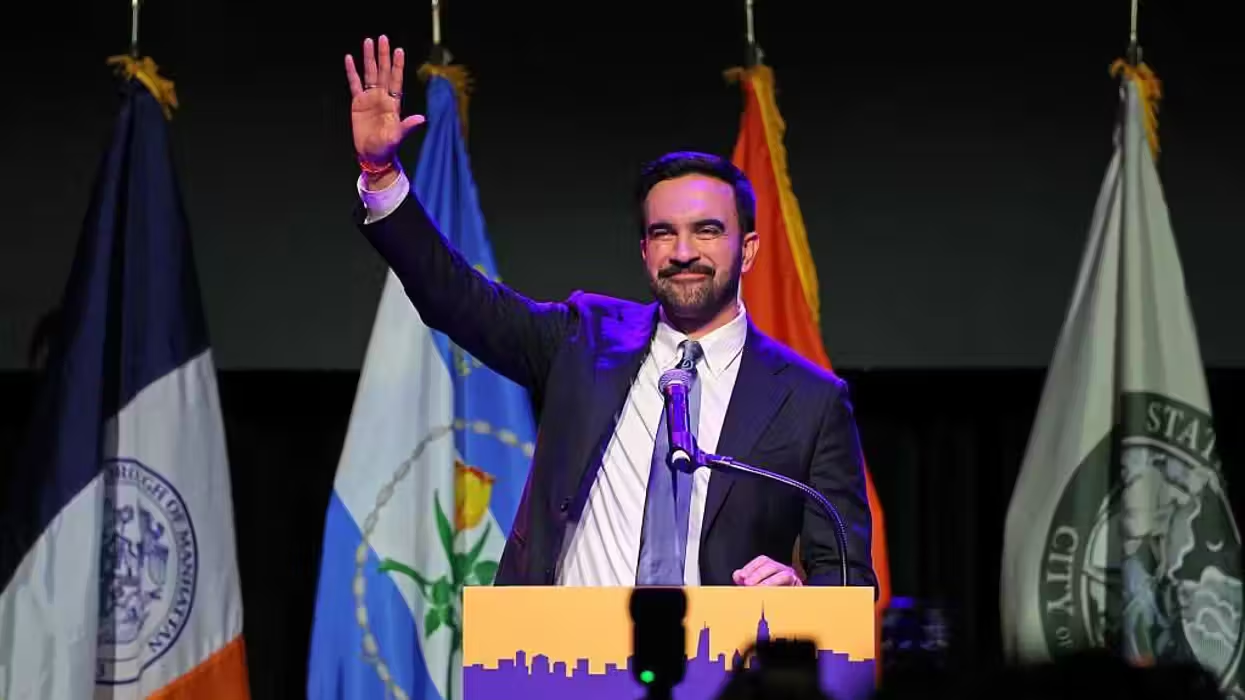
© 2025 Blaze Media LLC. All rights reserved.
When you think of the drug crisis, you usually think of New England or Rust Belt states like Ohio and West Virginia, which have all been ravaged by the illicit drug crisis over the past four to five years. But in a picture that is worth 1,000 words, the CDC’s most recent preliminary data, showing the overdose trends from May 2017 to May 2018, indicates a bright red surge in one heartland state not known for its drug overdose problems.
Obviously, in some ways this map is a paradox. Precisely because states like Ohio and West Virginia surged to record highs in recent year, they are experiencing a plateau effect in recent months and even a decrease in fatalities, whereas Nebraska, which was the lowest overdose state as late as 2016, is experiencing its first surge. But still, this warrants investigation. While drug deaths were surging from 2013 to 2016 nationwide, they stayed stagnant or declined in Nebraska.
Why now is there suddenly a 45.6 percent increase in fatalities from May 2017 to May 2018, and why does it appear to be intensifying?
To anyone following this column for the past year, this phenomenon is no enigma. We don’t have an opioid crisis per se, and certainly not a prescription opioid crisis – not over and beyond the baseline addiction problems we’ve had for a generation. The entire problem is a polydrug crisis brought on by the abundance and purity of illicit drugs brought in by Mexican drug cartels and distributed by criminal alien networks. Wherever the cartels can establish bases and distribution routes is where the overdoses will begin to spike. In recent months, that trend has been reflected in the upper Midwest and Great Planes. The primary drug is not an opioid, but the deadly psycho-stimulant meth.
Two weeks ago, the DEA’s Omaha Division put out a statement noting the increase in access to and purity of the meth in the region. Where is the meth coming from? In an interview with CR, acting Special Agent in Charge Darin Thimmesch said that the growing meth crisis is “definitely driven by foreign national organizations,” such as the Sinaloa Cartel in Mexico, whose agents “cross the border and take large shipments to Arizona and California and then travel through the interstate highways in this region.”
When Thimmesch first moved to the Omaha office two and a half years ago, there wasn’t much of an opioid crisis in the region. But today the predominant problem is meth, a non-opioid, coming directly from the Mexican drug cartels. He observed, “We’re seeing more and more that the cartels are running this business like you would often see in a private organization,” with the distributors they catch working “directly” for their sources south of the border “directed” by the cartels.
Thimmesch noted that although meth production in America is almost nonexistent, the unfettered production in Mexico by the cartels with their ability to cross the border and distribute it has created a lethal business model. “The cartels have been able to increase the purity level of meth and can make it in high quantities, allowing them to sell the product in bulk for really cheap. The high purity and low price have increased the addition problem in America.”
The story is similar to what we are seeing across the country, whether the market is for meth, heroin, or cocaine, often laced with fentanyl. This is very much a transnational problem of Mexican drug cartels and their ability to get their product and agents across our border. Thus, this is not like in previous decades where agents were dealing primarily with local street peddlers. The drug traffickers they are targeting, by definition, are not low-level people who are simply trying to make a buck to support their kids out of desperation, but people connected to and directed by some of the most dangerous cartels.
Special Agent Thimmesch made it clear that the DEA’s goal is always to target the biggest troublemakers. “We try to take it as high up on the ladder as we can – all the way back at the source in Mexico – we try to target the biggest violators who are causing the biggest problems in the area.”
El Chapo, the former head of the Sinaloa Cartel that is ravaging many parts of the country, now including the Great Plains, is currently on trial in New York. Many of the people testifying against him are former associates who now have incentives to give him up, thanks to the mandatory sentencing they face if they refuse to cooperate.
This is important to keep in mind as Congress wraps up passage of the First Step Act, creating front-end and back-end leniencies for drug traffickers during the worst drug crisis in our history. Much of the narrative is built on the notion that somehow the feds pursue “low-level, first-time, nonviolent” offenders. But that is not the picture I’ve seen from speaking to federal law enforcement agents or prosecutors who deal with drug cases at the federal level. Undoubtedly, the mandatories are important investigative tools needed to bust up these networks headed by individuals the president recently referred to as “animals.”
Furthermore, thanks to sanctuary cities like Minneapolis, much of the upper Midwest is experiencing a meth crisis.
Nebraska was never a high-prescribing state for opioid painkillers, and its prescription rate has gone down from 70.1 per 100,000 to 56.6 just from 2014 to 2017. And back in 2014, Nebraska was the lowest overdose state, and now it’s experiencing a crisis with drugs. And they’re not opiods.
Just last Tuesday, the CBP director testified that in fiscal year 2018, CBP agents and officers seized or disrupted 248,132 pounds of methamphetamine, by far a record. And the border migration enables the cartels to get in even more product undetected while agents are tied down.
The trend in Nebraska demonstrates that increasingly, the drug crisis is high level, deadly, and driven by criminal aliens, all refuting the entire premise of the First Step Act “prison reform” bill. It’s also quite evident from Nebraska’s experience that we could eliminate every prescription painkiller around and it will do nothing to stem the tide of the opioid and non-opioid drug crisis brought on by our suicidal policies.
#mc_embed_signup{background:#fff; clear:left; font:14px}
/* Add your own MailChimp form style overrides in your site stylesheet or in this style block.
We recommend moving this block and the preceding CSS link to the HEAD of your HTML file. */
Want to leave a tip?
We answer to you. Help keep our content free of advertisers and big tech censorship by leaving a tip today.
Want to join the conversation?
Already a subscriber?
Blaze Podcast Host
Daniel Horowitz is the host of “Conservative Review with Daniel Horowitz” and a senior editor for Blaze News.
RMConservative
Daniel Horowitz
Blaze Podcast Host
Daniel Horowitz is the host of “Conservative Review with Daniel Horowitz” and a senior editor for Blaze News.
@RMConservative →more stories
Sign up for the Blaze newsletter
By signing up, you agree to our Privacy Policy and Terms of Use, and agree to receive content that may sometimes include advertisements. You may opt out at any time.
Related Content
© 2025 Blaze Media LLC. All rights reserved.
Get the stories that matter most delivered directly to your inbox.
By signing up, you agree to our Privacy Policy and Terms of Use, and agree to receive content that may sometimes include advertisements. You may opt out at any time.
